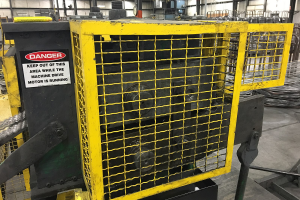OSHA drug testing rule makes it harder to keep drugs out
New OSHA drug testing guidance further tightens restrictions on employers’ ability to test workers who report injuries, making it more difficult for companies to maintain a drug-free workplace.
The guidance is contained in a larger document that also addresses what requirements employers can have for prompt employee reporting of injuries, and clarifies rules about safety incentive programs.
The document was issued last week to clarify agency rules issued in May that were intended to prevent employers from retaliating against workers for reporting injuries. The rules, which had been scheduled to go into effect in August, are now delayed until Dec. 1 because of a court challenge in Texas.
The OSHA drug testing rules prohibited mandatory testing of employees who report injuries on the assumption that some employees may view that testing as a form of retaliation. Instead the rules required employers who want to drug-test to have “a reasonable basis for believing that drug use by the reporting employee could have contributed to the injury or illness.”
The new OSHA drug testing guidance goes further, saying that results from any alcohol or drug tests conducted after an injury report cannot be used to discipline an employee – they can only be used as a tool “to evaluate the root causes of workplace injuries and illnesses in appropriate circumstances.”
If a drug or alcohol test is conducted in those circumstances, employers trying to maintain an alcohol- and drug-free workplace will be placed in a terrible position – they may know that an employee has violated company rules, but will be unable to take action.
In addition, OSHA says, if drug testing is done, it has to be capable of “measuring impairment at the time the injury or illness occurred.” Since drug tests cannot do this, the guidance effectively prevents employers from drug-testing employees who report injuries. Alcohol testing would be allowed since it can measure impairment.
The original May rule created a furor among employers, and the new guidance is raising even more intense objections.
In an excellent article on the subject, Rod Smith and his associates at the Sherman and Howard law firm said, “In our opinion, employers have the absolute right to a drug-free workplace, and should not hesitate in the least in meting out appropriate discipline to employees who test positive for drugs.
“It is unfortunate that OSHA has seen fit to interpret a broad and vaguely-worded rule in such a way that may prohibit employers from protecting its employees from the presence of drugs in the workplace. It is also our opinion that OSHA’s recent interpretation on this issue is unreasonable, is not entitled to deference, and should not be enforced or upheld by any reviewing body.”
Time-frames for reporting injuries
The May rules also required employers to have “reasonable” procedures for employees to report injuries, without defining further what is reasonable.
The new guidance says that a reasonable procedure might require workers to make a report “as soon as practicable after realizing they have the kind of injury or illness they are required to report to the employer, such as the same or next business day when possible.”
By saying that it is reasonable for employees to have until the next day to make a report, OSHA is effectively hurting employers’ abilities to protect their workers from situations that might pose an immediate hazard.
This seems at odds with OSHA’s stated mission to protect workers from harm.
Safety incentive programs
As for safety incentive programs, OSHA says employers are prohibited from taking “adverse action against employees simply because they report work-related injuries or illnesses.” An example might be withholding the benefits of an incentive program from an employee because the employee reported an injury or illness.
However, OSHA does say that incentive programs are acceptable if they provide rewards for compliance with “legitimate safety rules or participation in safety-related activities.”
Employers should therefore closely examine portions of their incentive programs that reward employees for lower OSHA recordable rates since reporting an injury could reduce or eliminate a reward that an employee might receive.


